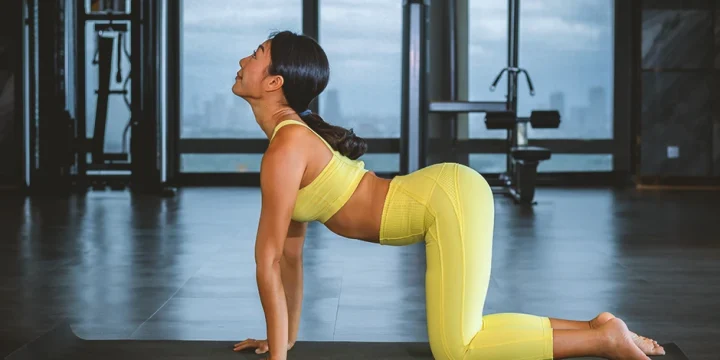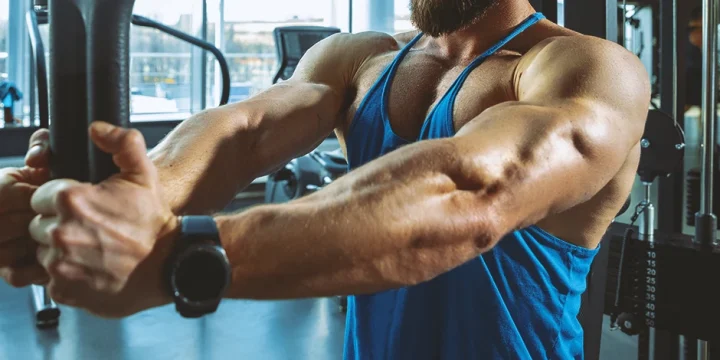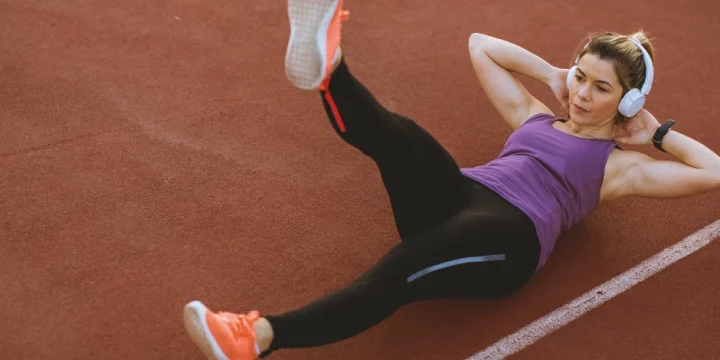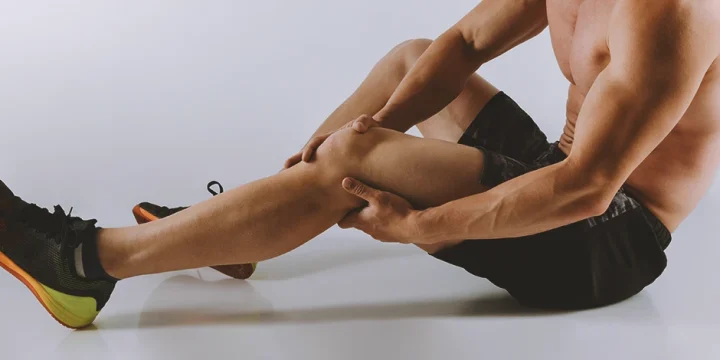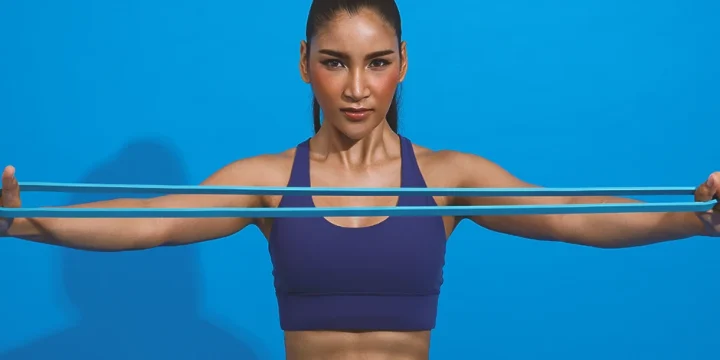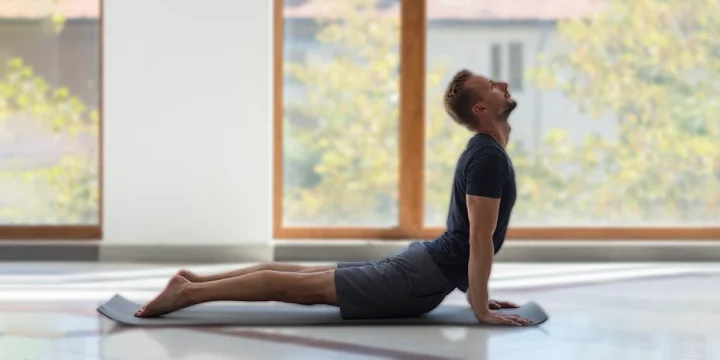As a professional fitness trainer, I've encountered many clients who wish to have stronger and bigger arms. However, it is hard to achieve this if you don't work your triceps, as they make up 70% of the size of the upper arm.
The tricep comprises three different heads, and the "medial head," our focus, is one of them.
In this article, I will discuss the anatomy and functions of the tricep, the medial head, and the best medial head tricep exercises.
Quick Summary
- Due to its hidden placement, the medial triceps head is an often overlooked muscle segment. Strengthening the medial head will make the triceps more robust and complete.
- Large triceps are ideal not just for professional weightlifters or those who wish to look like bodybuilders, but they significantly increase the total strength of the upper body.
- According to studies published in the National Library of Medicine, the long head of the triceps plays a more significant role in elbow extension during shoulder elevation, while the medial head becomes predominantly active at and above 90° of shoulder elevation.
- In my professional opinion, consistently focusing on the medial head tricep exercises can lead to remarkable improvements in both arm aesthetics and functional strength.
The Best Medial Head Tricep Exercises

1. Close Grip Bench Press
The close grip bench press is a form of bench press that is designed to improve triceps muscle and strength.
This position focuses on increasing the stability and growth of the triceps muscle groups and the chest.
In my experience as a health and performance coach, I've seen clients significantly improve their upper body strength and tricep size with this exercise, especially when they're aiming for more defined arms.
Regarding workouts that will pack mass into your triceps, the close grip bench press is unrivaled.
How to perform:
- Lay on a flat bench with your legs flat on the ground.
- Take an overhand hold on the bar, your hands shoulder-width apart.
- Slowly lower the bar to your lower chest, keeping your elbows as close to the sides as possible.
- At the bottom of the action, your elbows should be slightly lower than your shoulders.
- Return the bar to its starting position.
- Repeat for the desired number of reps.
2. Reverse Grip Cable Tricep Push-downs
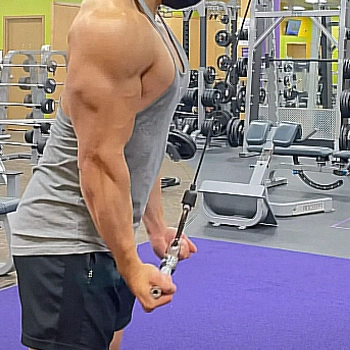
This exercise focuses on the medial head since it maintains the elbows at your sides and utilizes an underhand grip.
Most individuals believe the underhand grip exerts less pressure on the elbows.
How to perform:
- Attach the bar connection (e-z or straight) to a high pulley device.
- Stand towards the bar connection and grip the bar with your palms facing up. The breadth of your grasp should equal your shoulder width.
- Drop the bar till your sides fully stretch your arms, keeping the elbows at your sides and your feet shoulder-width apart.
- Keep your upper arms stationary and your elbows at your sides throughout the workout, and move your forearms.
- Then, while inhaling, slowly raise the bar connection towards your chest. This is one repetition.
- Repeat for reps.
3. Diamond Push-ups
Diamond push-ups are great bodyweight triceps exercises that don't require any equipment or machines.
Compared to regular push-ups, this version requires keeping your hands close beneath your chest, with the forefinger and thumb joined to form a diamond shape.
The emphasis in this posture is on the tricep medial head.
How to perform:
- Hold a plank posture with your core braced and your body straight.
- Put your hands together exactly beneath your chest, forming a triangle or diamond shape.
- For stability, tighten your core and glutes.
- Inhale and clench your triceps as you lower yourself to the ground.
- Maintain triceps tension while protecting the shoulder joint and elbow by keeping your elbows pulled close to your body.
- When your chest is near the floor, pause. Push through the triceps to return your body to its starting position without extending your elbows and arching your back.
- Repeat for the required number of reps and sets.
4. Flat Bench Skull Crushers
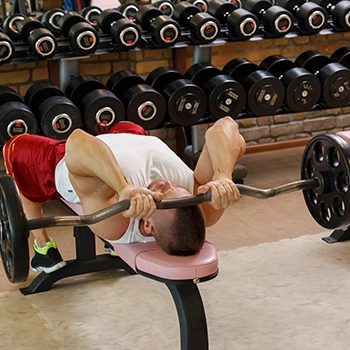
Skull crushers are an essential tricep exercise in which you lie on a flat bench and drop the bar to your head.
This workout's name comes from the load's closeness to your head. So don't be concerned; it's quite safe!
How to perform:
- Begin by placing your feet on the ground and leaning back with your upper body flat on the bench. Your arms will first stretch straight in front of you, 90 degrees to your torso.
- Before you start, tilt your arms back towards the head a few degrees. This angle maintains triceps tension throughout the range of motion.
- Then, bend your elbows and lower the load. Extend your elbows up slowly to the starting position once the bar nears the top of your head.
- Repeat for the desired number of reps.
Maintain your upper arms stationary throughout the exercise to decrease long-head participation while focusing on the medial head tricep.
5. Reverse Grip Bench Press
The reverse grip bench press is a traditional exercise that targets the triceps, chest, and anterior deltoids.
Due to the placement of your arms in relation to your torso, this unique yet effective complex exercise works your medial deltoids hard.
How to perform:
- Lay down on the flat bench with your head right beneath the barbell.
- Place your legs firmly on the ground, gently arch your back, and elevate your chest.
- Reach up and hold the bar with an underhand grip slightly broader than shoulder-width.
- Unrack the barbell and place it across your chest. To ensure your safety, use a spotter.
- Lower the bar to your lower chest by bending your arms.
- Drive the load back up to the starting position.
- Repeat for the desired number of reps.
6. Palm Out Bench Dip
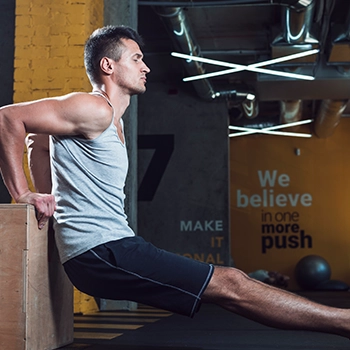
Although this is a bodyweight workout, it is a great triceps exercise for people of all fitness levels.
You may accentuate the medial head tricep by simply repositioning your hands.
From my coaching experience, I've observed that clients who adjust their hand positioning in this exercise often see a noticeable boost in both tricep definition and overall upper body strength.
The motions in this workout will assist in increasing general conditioning while also developing upper body and core strength.
How to perform:
- Sit on a bench and put your hands near your thighs. Do a standard bench dip, but turn both arms so that they are horizontally aligned with the bench.
- Start walking your legs out until your feet are fully extended, raising your bottom off the bench, and stretching your arms.
- Descend your body as far as possible by hinging at the elbow. Your hands should be at a 90-degree angle.
- Push up with your hands to return to the starting position. This is one repetition.
- Repeat for the specified number of reps and sets.
7. Cable Overhead Tricep Extensions
Use an overhead cable extension to target the medial triceps head. This workout is comparable to the French press; however, you may change your torso and arm posture.
For example, you may change the height of the pulley to exert greater strain on the triceps in the stretched position, which works the medial head tricep more.
How to perform:
- Employ a cable machine to stimulate the triceps medial head.
- Connect the rope attachment to the cable machine's lowest pulley.
- Face away from the machine while holding either end of the rope behind you, palms facing each other.
- Lift the rope above your head by slowly extending your elbows, maintaining your elbows near the opposite side of your head.
- Lower back to the starting position to achieve 1 rep.
- Repeat for the desired number of reps.
8. Tricep Kickbacks
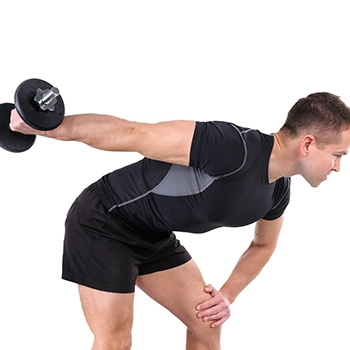
Tricep kickbacks are a popular tricep isolation workout that can help you gain muscle.
If you're careful not to overdo it with the load and follow proper form, it may greatly complement your tricep exercise routine.
How to perform:
- Hold a dumbbell in one hand and rest the other on a bench.
- Place one leg on the bench for support.
- Raise your arms behind your back, so your hands parallel the floor. Here is where you will begin.
- Kick your arms up without raising your elbows from the rowing stance. Return to your starting position and start again.
- Repeat for reps.
"Triceps kickbacks are a simple and efficient approach to strengthen your arms and upper body. Including them in your regimen can help you perform better in other physical exercises."
- Gregory Minnis, Doctor of Physical Therapy
Also Read: Best Triceps Stretches
9. Dumbbell Tate Press
The Tate press is titled after the legendary powerlifter Dave Tate.
It's a great addition to the bench press and creates stronger, thicker triceps, particularly the medial head tricep.
It's comparable to skull crushers, but the dumbbells are dropped toward the chest rather than back toward the head.
As a result, the Tate press is also known as the chest crusher.
How to perform:
- Laying on a bench, press and grip two dumbbells at arm's length across your chest.
- Lower the dumbbells down and toward the center of your chest, pushing your elbows outward.
- Stretch your arms and return the dumbbells to their starting position.
- Repeat for reps.
Interestingly, individual anatomical differences such as arm length and muscle insertion points can significantly impact the effectiveness of tricep exercises.
Tailoring exercises to these variations can enhance training results, making it essential for trainers to consider these factors when designing workout routines.
Tricep Anatomy and Function

The tricep brachii muscle is placed on the rear of your arms and extends to the elbow.
The triceps, which account for 70% of your arm, acquire their name, which begins with "tri," from their three heads.
The following are the three heads:
1. The Lateral Head
The lateral head is outside the back upper arm and smaller than the long head, as shown in studies published in the National Library of Medicine [1].
Interestingly, the lateral head is considered the strong tricep head due to its more fast-twitch muscle fibers.
The lateral head doesn't support the shoulder since it is not attached to the scapula. Instead, it is only engaged in elbow extension.
2. The Long Head
The long head is the biggest of the three triceps muscles and is placed inside your back and upper arm. It begins on the scapula bone, located towards the rear of your shoulder.
The long head aids in the stabilization of the shoulder joint. And it's most active when you extend the elbow with your hand down by your side.
Related: Best Long Head Triceps Exercises
3. The Medial Head
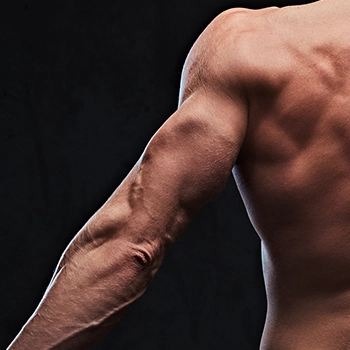
"The triceps lateral and long heads intertwine the medial head. It has a large origin that runs the length of the humerus's posterior side, inferior to the radial groove."
- Gordana Sendic, Doctor of Medicine
While the medial head is not as apparent as the other two heads, it provides thickness to your hands and power in pushing exercises.
While each of the three heads has its own origin point, they merge and penetrate the forearm's ulna and fascia right past the elbow.
Furthermore, they all perform vital functions in elbow extension and stability.
The Medial Head of the Tricep

1. What Is the Medial Head?
The medial head is little but powerful; it helps to stabilize your elbow and helps to fill out the upper arm, so it looks proportionate.
It cannot be completely detached from the other heads; therefore, you must emphasize its engagement in the appropriate exercises.
2. What Is the Location of the Triceps Medial Head?
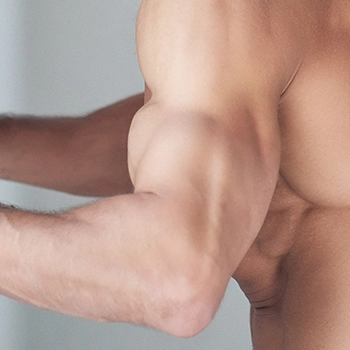
The medial head is located at the rear of the arm, directly above the elbow, and beneath the long head.
It is the smallest head, partially covered by both the long and lateral heads.
3. What Is the Function of the Triceps Medial Head?
The medial head's role is to help extend forearm extension at the elbow joint and provide elbow stability.
It also helps fill out the rear of your upper arms, giving them a more proportionate appearance.
This head is triggered with every forearm movement, even when there is no resistance, as opposed to the lateral and long heads, which are primarily activated while extending with resistance.
How to Work the Medial Head

The extent to which the medial head triceps are stimulated is determined by your arm angle, rep range, hand position, and range of motion.
There are also several ways to focus the medial head when performing the best medial head tricep exercises.
1. Elevation of the Arm
Arm elevation is the most important component in tricep head activation. In other words, your upper arm's posture in relation to your shoulder.
According to research published in the National Library of Medicine, the medial head takes over around 90 degrees or above shoulder level [2].
As a result, you train the medial head more with tricep exercises that have your arms at shoulder level or above.
Note that this is a relative angle to your torso, not the floor. This rule applies whether you are standing upright, leaning forward, or reclining on a bench.
2. Hand Placement
Another element that influences which tricep heads are engaged is your hand placement, especially whether you do medial head tricep exercises with an underhand or overhand grip.
Supination vs. pronation is the technical term for hand placement.
Supination is the process when your palm is facing up, whereas pronation is when your palm is facing down.
While the triceps have no mechanical role in rotating the hand or forearm, research published by the National Institutes of Health shows it's more engaged when the arm is supinated [3].
It implies an underhand grip may be preferable for targeting all the tricep heads, including the medial head triceps.
3. Range of Motion
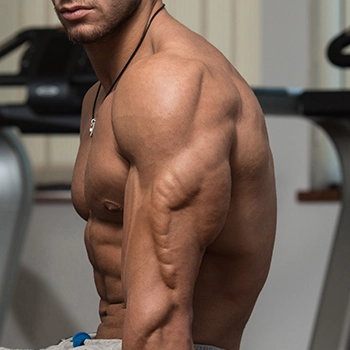
Degrees can also quantify the range of motion performed during workouts.
Medial head tricep exercises range from around 0 degrees (arm straight) to about 150 degrees (arm fully bent).
The medial head becomes more active at roughly 90 degrees in the motion range.
As a result, it makes sense to select exercises that optimize loading with the elbow at 90 degrees to train the medial head the most.
4. Load and Rep Range
Understanding that muscle fibers are categorized into types I and II is essential.
Type I fibers suit low-repetition activities, while type II fibers are for explosive, heavy-load exercises.
The tricep heads contain varying ratios of these fibers, so adjusting load and repetition is effective for targeted development.
Research published by the National Library of Medicine indicates the medial head predominantly comprises type I fibers, making it more responsive to precise, lighter-weight exercises [4].
In addition to these factors, understanding common tricep injuries, such as tendonitis or muscle strains, and implementing preventive measures during workouts can be crucial.
Including rehabilitation exercises for those recovering from tricep-related injuries can also be beneficial for maintaining overall arm health and strength.
The Importance of Training the Medial Head
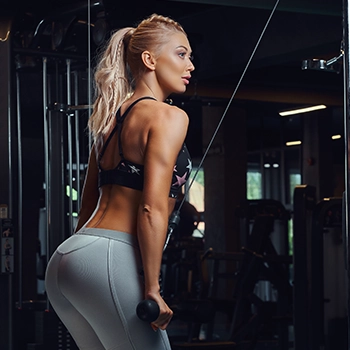
Moreover, incorporating nutritional strategies focused on muscle growth, such as adequate protein intake and timing of meals, can significantly augment the development of the triceps, including the medial head.
Supplements that support muscle recovery and growth can also play a crucial role in achieving optimal tricep development.
FAQs
What Tricep Exercises Work the Medial Head?
The tricep exercises that work the medial head tricep are diamond push-ups, cable high pulley overhead extensions, tricep kickbacks, and close grip tricep presses.
What Exercise Hits All 3 Tricep Heads?
The exercise that hits all three tricep heads the most is the diamond push-ups. Also, the tricep push-downs, close grip bench presses, and kickbacks work the three tricep heads.
Do Skull Crushers Work the Medial Head?
Yes, skull crushers work the medial head triceps compared to upright triceps extensions and other tricep exercises where your upper arms are at your side. This can help you increase mass in the triceps, which is vital for bodybuilders.
References:
- https://www.ncbi.nlm.nih.gov/books/NBK536996/
- https://pubmed.ncbi.nlm.nih.gov/29503079/
- https://www.ncbi.nlm.nih.gov/pmc/articles/PMC2758423/
- https://pubmed.ncbi.nlm.nih.gov/19598170/
About The Author
You May Also Like
